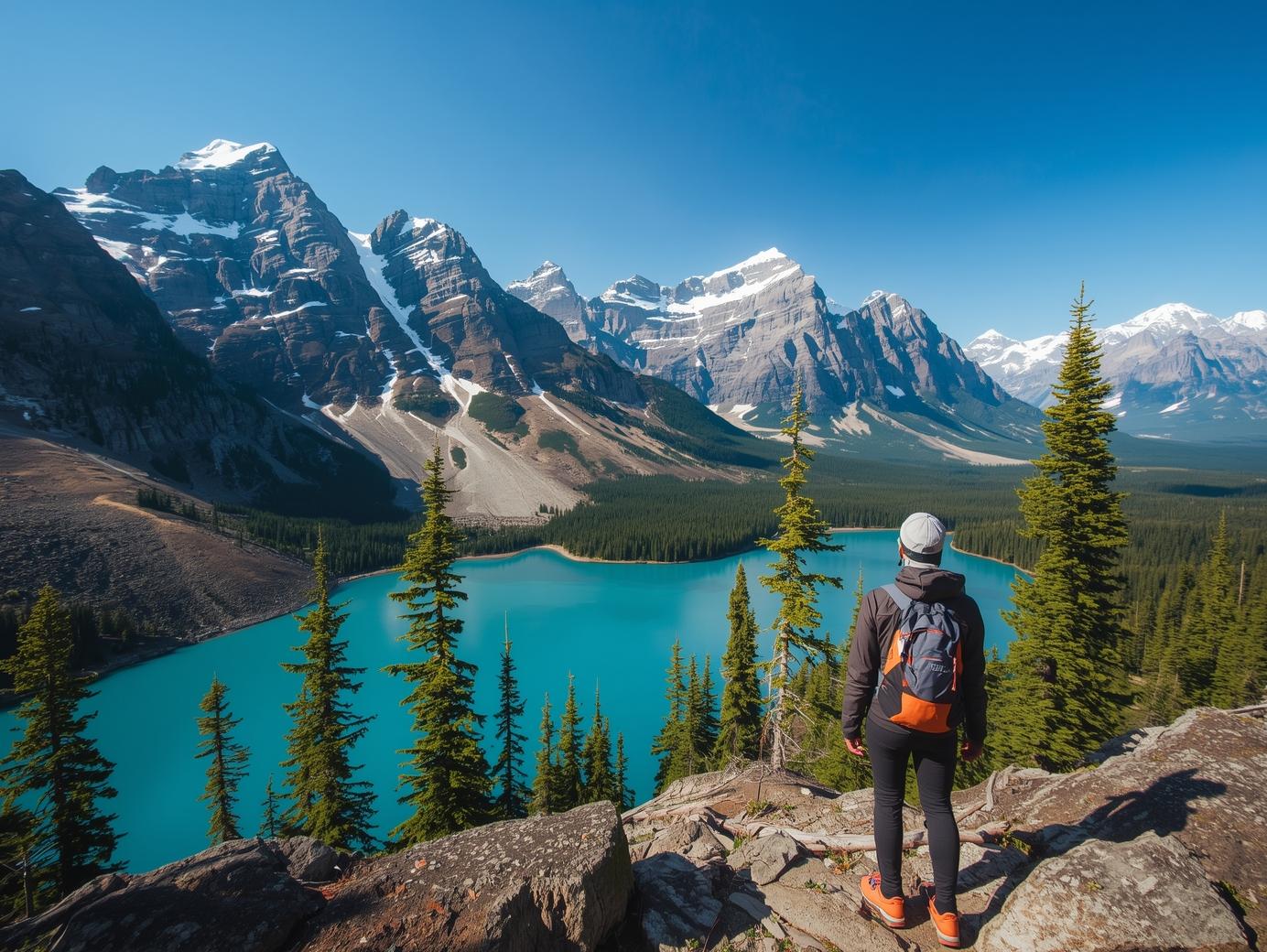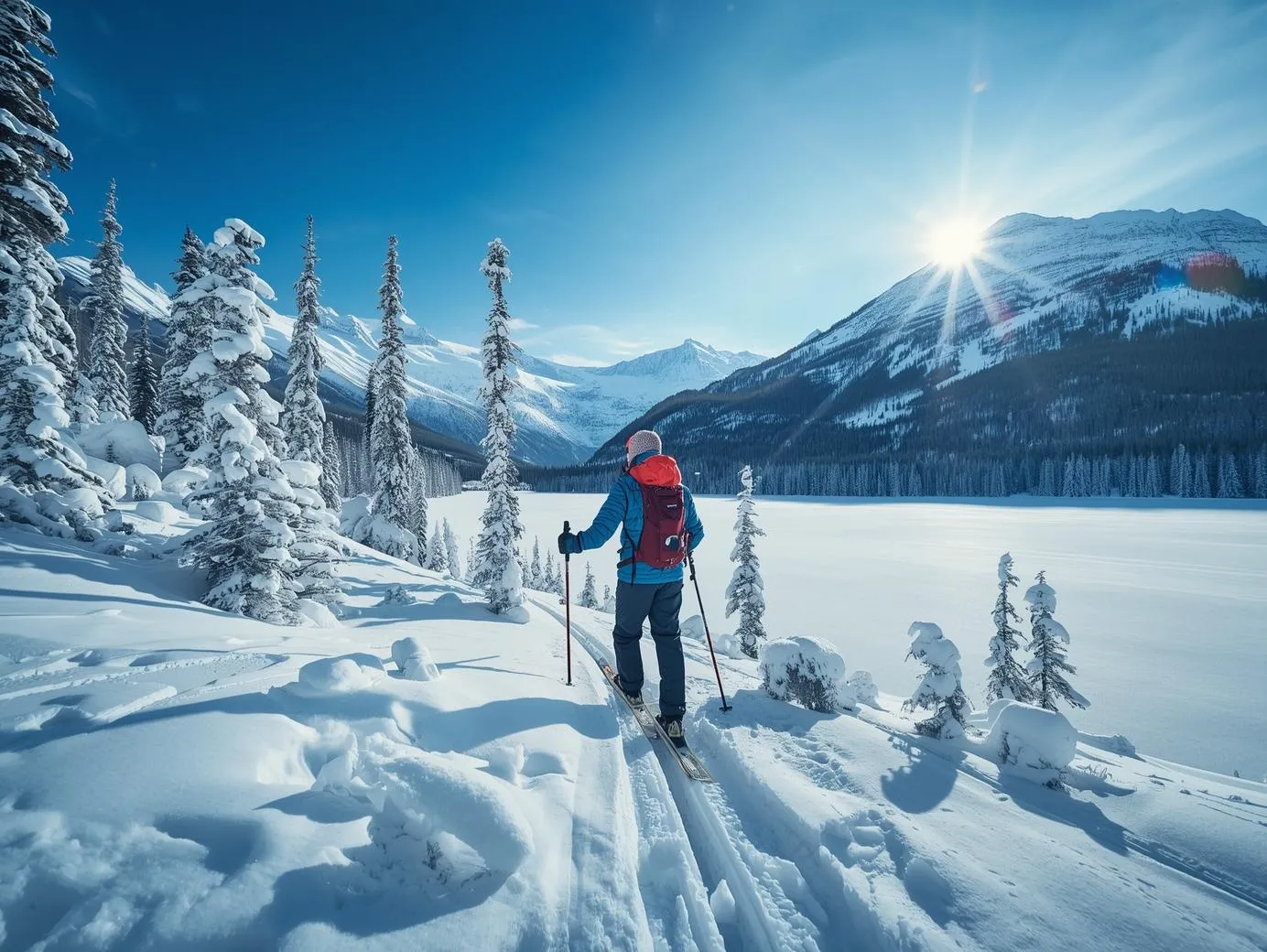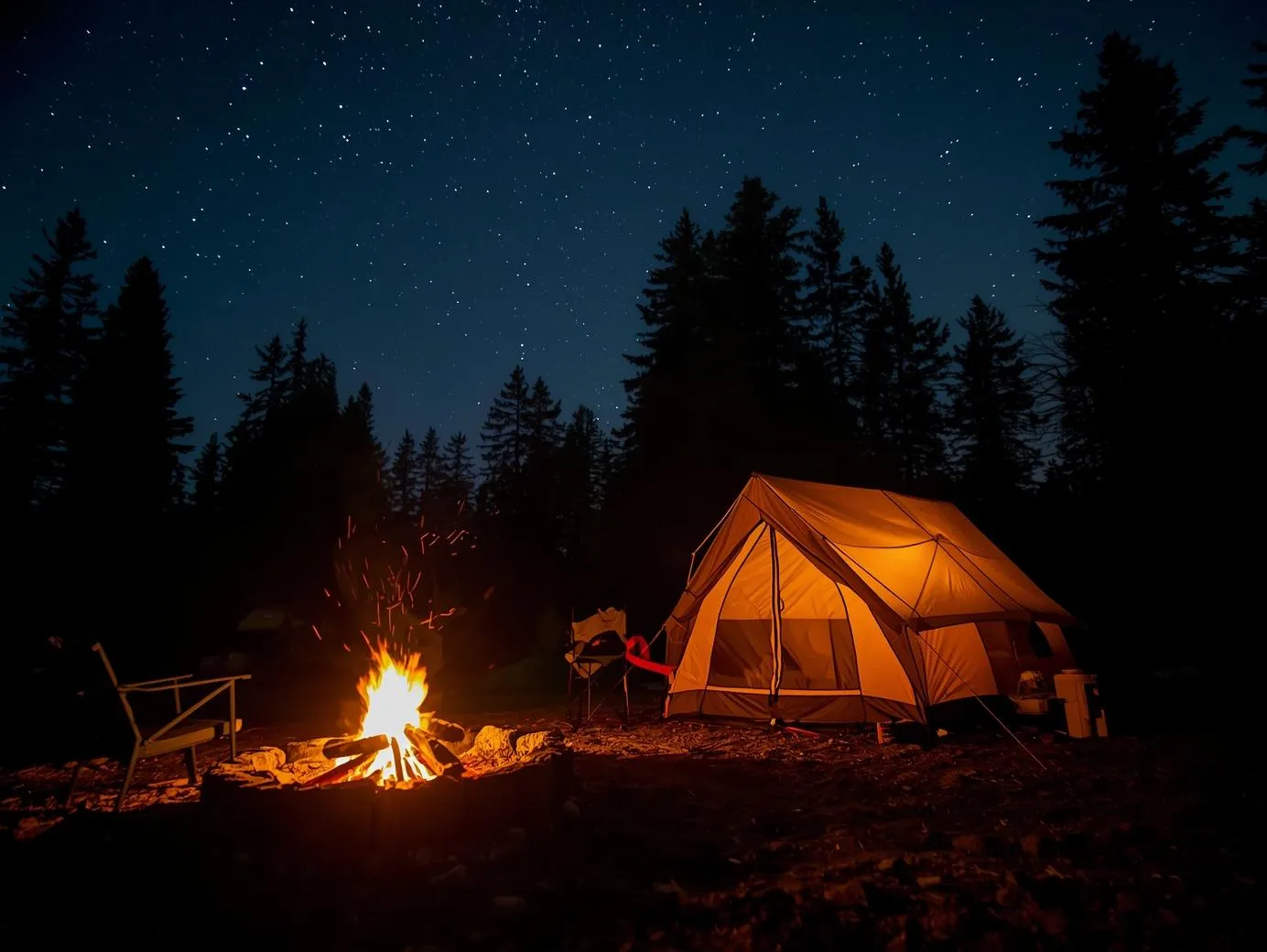Survival Gear: Essential Guide to Outdoor Adventure
The call of the wilderness, whether it’s the rugged peaks of the Canadian Rockies, the dense cedar forests of British Columbia, or the sweeping tundra of the Yukon, has always stirred the spirit of adventure in Canadians. But with that freedom comes responsibility. Preparedness isn’t optional; it’s what allows you to explore safely and confidently. Survival gear isn’t just a backpack full of tools, it’s your lifeline, the difference between an inconvenience and a full blown emergency.
This essential guide will walk you through how to build, maintain, and customize a reliable survival kit suited for Canada’s diverse landscapes. Whether you’re an occasional camper or a seasoned explorer, being prepared ensures that no matter what nature throws your way, from a sudden snow squall in Banff to a stalled canoe on Lake Superior, you’ll be ready to handle it with skill and confidence.
Why Survival Gear Matters in an Outdoor Adventure
Venturing beyond the comforts of city life always carries a degree of uncertainty, and in a country as vast and diverse as Canada, that unpredictability can escalate quickly. From sudden snow squalls sweeping across the Prairies to shifting weather patterns in the Maritimes, conditions can change in a matter of minutes. A well equipped survival kit transforms your approach from reactive to proactive, allowing you to manage unexpected situations with calm and control rather than fear or panic.
Safety and Protection in Unexpected Situations
In Canada’s vast and unpredictable wilderness, what starts as a routine hike can quickly escalate into a rescue situation. Whether it’s a sprained ankle deep in the backcountry or a sudden whiteout in the mountains, having the right survival gear can make the difference between a minor setback and a life threatening emergency. Your kit provides the essentials for shelter, first aid, and signaling, allowing you to stay protected and manage the situation until help arrives, or until you can safely make your way to safety on your own. With the right tools, you’re not only ready to face the unexpected but also to take control of your own safety. For winter hunting, essential gear for winter hunting such as insulated gloves, a weatherproof knife, and extra layers of thermal clothing is crucial to staying safe and prepared in the cold.
Sustaining Energy, Warmth, and Communication
The cornerstone of survival is maintaining warmth, hydration, and energy. Essential gear helps you purify water, stay nourished, and keep body heat in frigid Canadian conditions. From the biting winds of the Rockies to the damp chill of the East Coast, tools that generate fire or provide insulation can make the difference between comfort and crisis. Just as vital are communication devices, satellite messengers, radios, or emergency beacons, that let you stay connected even in regions where cell service disappears.
Boosting Confidence and Preparedness for Any Challenge
Mental resilience is as crucial as physical tools. Knowing you have what you need, a functioning water filter, dependable flashlight, and portable power source, instills a calm confidence that can steady your decision making when things go wrong. Preparation doesn’t just ensure survival; it allows you to fully enjoy the Canadian wilderness, confident that you can handle whatever challenges the landscape presents.
How to Choose the Right Survival Gear and Equipment
With so many survival products on the market, selecting the right gear can feel overwhelming. To build an effective, manageable kit, focus on performance, practicality, and your specific needs.
Prioritize Durability and Portability
Your gear needs to withstand the harsh conditions of Canada’s diverse environments. Whether you're in the rugged Rockies, the snowy Yukon, or the dense forests of Ontario, choose equipment that’s waterproof, shock resistant, and built for longevity. Equally important is portability, select lightweight, multi functional tools that serve multiple purposes to reduce bulk, making your kit easier to carry and use in emergencies.
Consider Weather and Environmental Conditions
The Canadian wilderness is unpredictable, so your gear must be adaptable. A kit for summer canoeing in Algonquin Park differs vastly from what you’ll need for snowshoeing through the Yukon Territory. Always choose clothing layers, insulation, and fire-starting tools suited for the extreme temperatures and conditions you’re likely to face in your region. In Canada, cold weather performance should always be a priority, especially if you’re heading into northern or mountainous areas.
Choose Power Sources that Work Off-Grid
In remote locations, access to power outlets is limited, so your survival kit should include off grid power options. Look for solar powered chargers, crank powered devices, or flashlights and radios with long lasting batteries that can be easily recharged, ensuring that your critical communication and navigation tools remain operational when needed most.
Evaluate Ease of Storage and Transport
No matter how well equipped your survival kit is, if it’s too bulky or disorganized, it’s not effective. Whether you're keeping it in your vehicle for road trips or packing it into your backpack for a multiday trek, gear should be organized, clearly labeled, and easily accessible. Opt for high quality storage bags or rugged containers to keep your gear dry, protected, and ready to go when the unexpected happens.
For essentials for outdoor adventures, remember to pack lightweight, high-performance tools and gear that serve multiple purposes without adding unnecessary bulk.


What Are 10 Items in an Emergency Kit?
When building a well-rounded "Go-Bag" for emergencies, there are certain items you simply can’t skip. These 10 essentials form the core of your survival kit, addressing the immediate needs for sustenance, safety, and communication.
Water Supply
In a survival situation, water is your top priority. Ensure you have enough for at least three days, or better yet, pack a reliable water filter and purification tablets. A metal container for boiling water is essential, as boiling is one of the most effective ways to purify water from natural sources.
Non-Perishable Food
Pack high energy, non perishable foods like energy bars, dried fruits, nuts, and dehydrated meals. These compact, nutrient dense options will help you sustain energy in the event you’re cut off from regular food sources. Rotate your supplies regularly to ensure freshness, especially if you keep them in your vehicle or backpack.
First Aid Kit
A survival first aid kit is more than just bandages. It should include materials to treat severe injuries, manage shock, and address common outdoor ailments like hypothermia, blisters, or insect bites. Make sure to pack any personal medications you may need, as well as supplies for emergency wound care and infection prevention.
Flashlight and Extra Batteries
Reliable lighting is essential for both safety and navigation. Whether you’re navigating in the dark on a night hike or simply need to signal for help, a flashlight should be a core part of your kit. Include extra batteries, and consider packing a headlamp for hands-free operation. In Canada, especially during winter, ensure you use lithium batteries, which perform better in freezing temperatures.
Portable Power Station
In the Canadian wilderness, where distances are vast and rescue times can vary, having a dependable power source is more than a convenience, it’s a lifeline. During extended backcountry trips or emergencies, a portable power station ensures your essential devices stay charged, from flashlights and radios to GPS units and phones. The EcoFlow RIVER 3 Plus Portable Power Station delivers fast, reliable power wherever you are, making it ideal for both emergency use and long outdoor expeditions. Compact yet powerful, it can recharge lights, communication tools, and small appliances with ease, keeping you connected and prepared even when you’re far from civilization.
Communication Tools
Clear communication is critical in emergencies. Always carry at least one method of signaling for help, like a whistle or a crank powered NOAA weather radio. For remote areas, a personal locator beacon (PLB) or satellite messenger can notify rescuers of your location, even when there’s no cell service.
Warm Clothing and Blankets
Canada’s temperatures can plummet unexpectedly, especially in mountainous regions or northern areas. Pack several layers of wool or synthetic thermal clothing, waterproof outerwear, and a Mylar space blanket. These compact items help prevent hypothermia during sudden temperature drops, providing essential insulation and warmth.
Personal Hygiene Items
Maintaining hygiene in an emergency is more than just a comfort, it's crucial for health and morale. Include hand sanitizer, soap, and toilet paper, as these small items will help prevent illness and keep you feeling human during long stretches in the wild.
Multi-Tool and Duct Tape
A solid multi-tool is essential for everything from making minor repairs to preparing food. Pair it with duct tape, which can fix almost anything in a pinch, whether it’s sealing up gear or patching up shelter. These two tools are the ultimate problem solvers in your survival kit.
Important Documents
Keep photocopies of critical documents in a waterproof pouch. This should include your identification, medical information, prescriptions, proof of insurance, and emergency contact information. In an emergency, having these documents readily available can expedite your recovery or assist rescuers in providing proper care.


Top Survival Supplies for Canadians
Canada’s immense landscape and unpredictable weather demand a survival kit tailored to local conditions. What works for someone living in downtown Toronto may not suit those venturing into the backcountry of British Columbia or the wind swept plains of the Prairies. Preparing for the environment you’ll face, whether it’s freezing temperatures, heavy snowfall, or remote terrain, ensures that your gear performs when you need it most.
Essential Gear for Cold Weather and Snowstorms
For Canadians, cold weather readiness isn’t optional, it’s vital. Sub zero rated sleeping bags, insulated mats, and thermal layers help retain body heat during frigid nights. Include chemical hand and foot warmers for quick warmth, along with a compact snow shovel and, in mountainous areas, an ice axe for traction and safety. Fire starting gear is another must: pack waterproof matches, lighters, and ferro rods with reliable tinder. These items can mean the difference between comfort and crisis when temperatures plummet or snow traps you unexpectedly.
Reliable Power Solutions for Remote Areas
Much of Canada’s wilderness remains far beyond the reach of the power grid, especially in northern regions like the Yukon or Nunavut. That’s why renewable energy options are indispensable in modern survival kits. Portable power stations, such as the EcoFlow RIVER 3 Plus, paired with solar panels, allow you to keep critical devices running, whether that’s a satellite communicator, flashlight, or medical equipment. These systems ensure you maintain communication and safety no matter how isolated your location.
Best Stores and Online Options for Survival Gear in Canada
When shopping for survival equipment, Canadians should choose trusted retailers who understand local demands. National chains like MEC (Mountain Equipment Company), Canadian Tire, and Cabela’s Canada, along with specialty outdoor suppliers, offer products tested for the country’s challenging climates. Prioritize gear rated for Canadian winters and certified to local safety standards, ensuring durability and reliability when it truly counts.
How to Maintain and Update Your Survival Kit
A survival kit isn’t a one time purchase. It's a living, evolving tool that requires regular upkeep to stay effective. A well maintained kit ensures you're always ready, no matter how unpredictable the Canadian wilderness or emergency situations become.
Replace Expired Food and Batteries Regularly
Set a reminder every six months, perhaps when daylight saving time changes, to audit your kit. Check expiry dates on food, medications, and batteries. Over time, items like energy bars or standard alkaline batteries lose their potency, and having expired supplies in your kit can leave you ill prepared when it matters most. Regularly rotating food and replacing expired batteries will ensure that everything works as expected in an emergency.
Test Flashlights, Radios, and Power Stations
It’s tempting to assume that your flashlight, radio, or portable power station will be ready when needed, but don't take that chance. Make sure to test all electronics periodically. For flashlights, check that the light works and replace any dead batteries. For radios, test the signal range, and for power stations, verify the charge levels, performing a full charge discharge cycle every few months to preserve battery health. If you’re relying on solar panels for energy, clean them regularly to keep them functioning at peak efficiency.
Adjust Supplies Based on Season and Family Needs
Canada's ever changing seasons demand that your kit adapts too. During warmer months, swap out heavy winter coats for lighter layers and add items suited to summer conditions, like extra sunscreen and insect repellent. But come winter, ensure you have the proper cold weather tools: thermal blankets, snow grips for traction, and additional layers for warmth. As your family grows, or as medical needs change, revisit your kit and update medications, first-aid supplies, or any specialized items to keep your gear tailored to your current needs.


Conclusion
Preparedness is the foundation of every safe and successful outdoor adventure. In a country as diverse and unpredictable as Canada, taking the time to select, test, and maintain your survival gear isn’t just about being cautious, it’s about being capable. Whether you’re camping in the Laurentians, trekking through Banff, or exploring the rugged trails of Newfoundland, the right equipment ensures you can face unexpected challenges with calm and confidence. By investing in quality gear and keeping it ready for action, you’re not only protecting yourself but also enhancing your freedom to explore Canada’s wild beauty safely and responsibly. Start assembling your kit today, because in the outdoors, readiness is the ultimate form of peace of mind.
FAQs
How can I create a compact survival kit for small apartments?
Creating a compact survival kit for a small apartment is all about maximizing space and choosing multi purpose gear. Focus on essentials that serve multiple functions, such as a reliable multi tool, compressed hygiene wipes, and high density food bars. Store everything in a sturdy backpack or stackable plastic bins for easy access, using vertical space like closet shelves to stay organized. Keep lightweight, compact versions of your core items, like a foldable water container, mini first-aid kit, and emergency blanket and maintain a small, rechargeable power source such as the EcoFlow RIVER 3 Plus, ensuring you’re ready to power lights or communication devices during an outage.
What type of survival gear is best for families with children?
For families with children, the best survival gear balances practicality with comfort and familiarity. Stock larger water reserves and extra non perishable foods, including comfort items like granola bars or instant soups that kids are more likely to eat during stressful situations. Don’t overlook emotional comfort, pack a few small toys, books, or family photos to help maintain a sense of normalcy. Make sure your first aid kit includes child specific medications, bandages, and allergy treatments, and store everything in clearly labeled, easy-to-reach containers. Finally, ensure every family member knows where essential items, like flashlights, first aid supplies, and communication devices are located in case of an emergency.
Are solar-powered survival tools effective in cloudy or cold climates?
Yes, solar powered survival tools still work in cloudy or cold Canadian climates, but their output is reduced compared to sunny conditions. Even on overcast days, high efficiency solar panels can capture diffuse sunlight and slowly recharge your gear. To make the most of them, pair your solar setup with a reliable portable power station, such as the EcoFlow RIVER series, which stores excess energy for use at night or during extended storms. Because Canada’s weather can be unpredictable, it’s also smart to keep a non-solar backup, like a hand crank radio, extra batteries, or rechargeable power bank to ensure consistent power when solar collection is limited.
How do I safely store power banks and portable power stations for long-term use?
To safely store power banks and portable power stations for long-term use, keep them in a cool, dry environment away from direct sunlight, moisture, and temperature extremes, avoid garages or vehicles that experience seasonal heat or freezing. Maintain a charge level between 50% and 80%, as storing them fully charged or completely drained can shorten battery life. Every three to six months, check the charge level and top it up if needed to prevent deep discharge, which can permanently reduce capacity. For extra protection, store units in their original cases or padded bags to guard against dust, humidity, and accidental impact.
Where can I find certified emergency supplies in Canada?
In Canada, certified emergency supplies are best purchased from trusted national outdoor retailers such as MEC (Mountain Equipment Company), Canadian Tire, and Atmosphere, as well as specialized preparedness outlets that focus on survival and first aid gear. Always look for equipment that meets Canadian safety standards and recognized international certifications, such as NSF for water filtration, CSA for electrical devices, or Health Canada approved medical supplies. You can also consult official resources from the Government of Canada or your provincial emergency management agency, which provide up to date checklists, supply recommendations, and guidance on sourcing verified, disaster ready gear.